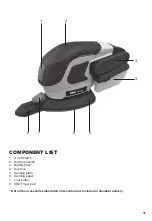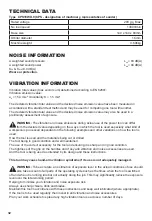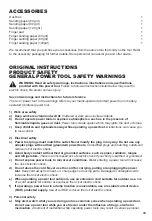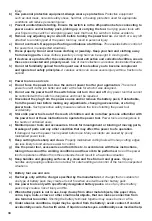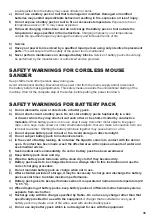
41
H
3. SDS FINGER PAD (SEE FIG. I1, I2)
This sander has a finger pad (8), which is suitable
for fine sanding in corners, edges, or hard-to reach
areas.
I1
I2
WORK HINTS FOR YOUR
SANDER
If your power tool becomes too hot, run no load for
2-3 minutes to cool the motor.
Always ensure the work-piece is firmly held or
clamped to prevent movement.
Any movement of the material may affect the
quality of the sanding finish.
Start your sander before sanding and turn off only
after stopping sanding. For best results sand wood
in the direction of the grit.
Do not start sanding without sandpaper fitted.
Do not allow the sandpaper to wear away, it will
damage the base-plate. The guarantee does not
cover base-plate wear and tear.
Use coarse grit paper to sand rough surfaces,
medium grit for smooth surfaces and fine grit for
the final surfaces. If necessary, first make a test on
scrap material.
Use only good quality sandpaper.
The sanding efficiency is controlled by the
sandpaper not the amount of force you apply to
the tool. Excessive force will reduce the sanding
efficiency and cause motor overload. Replacing
the sanding paper regularly will maintain optimum
sanding efficiency.
MAINTENANCE
Remove the battery pack from the socket
before carrying out any adjustment, servicing
or maintenance.
Your power tool requires no additional lubrication
or maintenance.
There are no user serviceable parts in your power
tool. Never use water or chemical cleaners to
clean your power tool. Wipe clean with a dry cloth.
Always store your power tool in a dry place. Keep
the motor ventilation slots clean. Keep all working
controls free of dust. Occasionally you may see
sparks through the ventilation slots. This is normal
and will not damage your power tool.
FOR BATTERY TOOLS
The ambient temperature range for tool and
battery use and storage is 0
o
C-45
o
C.
The recommended ambient temperature range for
the charging system during charging is 0
o
C-40
o
C.





